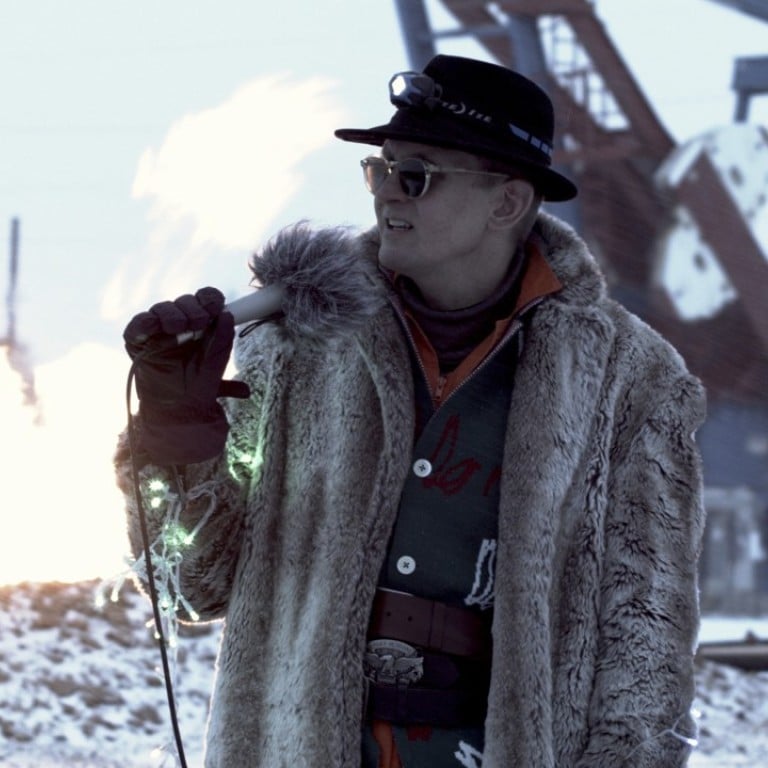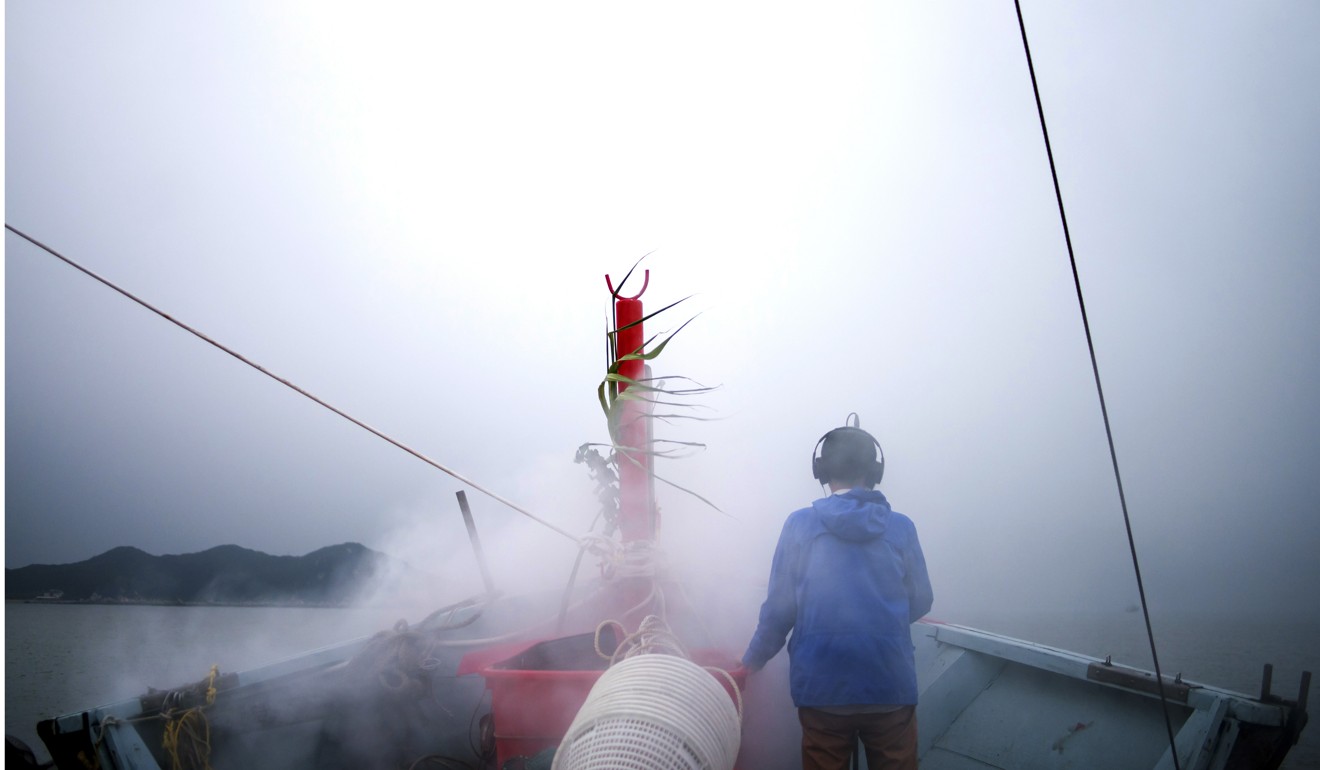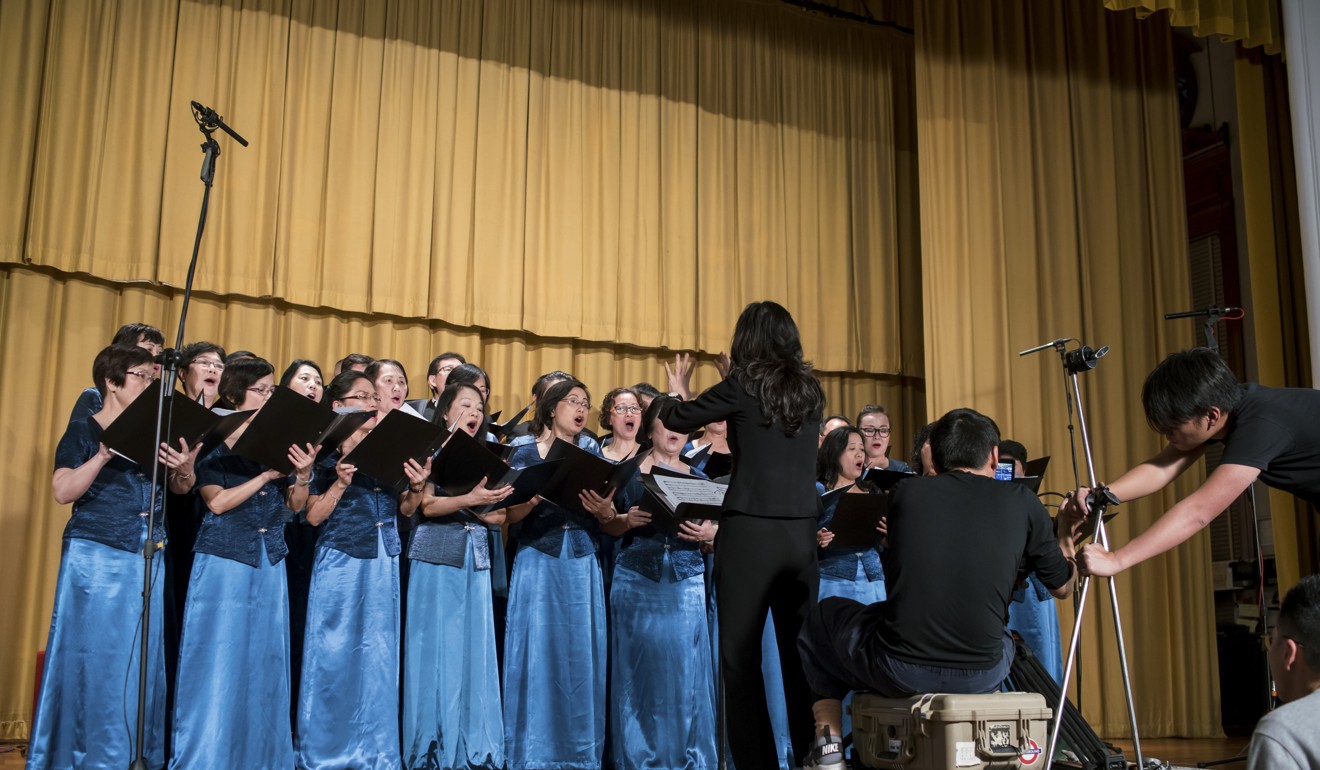
Hong Kong’s 2017 Venice Biennale show inspired by charity singles and the bad side of trying to do good
Samson Young’s exhibition Songs for Disaster Relief is made up of videos, sound installations, sculptures, neon signs and drawings and features a mash-up of charity singles from the West and Hong Kong
On July 13, 1985, over a billion people turned on their televisions to watch the Live Aid concerts and for an all-too-brief moment, there was a sense that the world was united.
The concerts in London and Philadelphia were held to raise awareness and relief funds for the Ethiopian famine, and they were beamed live to over 100 countries, crossing all political divides in what now appears to be a more charitable, less cynical age.
Do they know it’s Christmas? and We Are the World – the bland, patronising singles that raised millions of dollars – have remained pop classics for evoking the kind of global goodwill that we have yet to see again.

That 1985 moment is one of the major points of reference for Samson Young Kar-fai’s “Songs for Disaster Relief”, a large, multimedia exhibition that the artist and classically trained composer has created for Hong Kong’s presentation at this year’s Venice Biennale.
The short trailer released ahead of the May 13 opening promises an immersive and surreal experience. It includes a cartoon of a drummer somersaulting through space as a voice in the background imitates the bugle call in US military funerals, followed by a film in which a singer clad in a fur coat sings in a North Dakota oilfield next to a raging fire.

This otherworldly vocal harks back to the singer in Young’s Coffee Cantata (Institute of Fictional Ethnomusicology), a video from 2015 in which a fictional owner of a café performs variations on J. S. Bach’s little-known Coffee Cantata on his own, surrounded by the empty landscape of New Mexico. (It is, in fact, the same singer in real life, Michael Schiefel.)
Hong Kong should adopt an open selection process for its entry in Venice Biennale
Young says he is filling the Hong Kong pavilion with four groups of work made up of videos, sound installations, sculptures, neon signs and drawings. Each group will feature a mash-up of charity singles from the West and Hong Kong, where the fashion for event-driven recordings has outlasted many other countries. The exhibition is co-presented by the Hong Kong Arts Development Council and M+.

This edition of the Venice Biennale, the world’s biggest international art exhibition, is titled “Viva Arte Viva”, with the focus on how artists respond to contemporary social issues. Young doesn’t make statements as such, but he has often used sounds to analyse political tension. This can be seen in works such as For Whom the Bell Tolls: A Journey Into the Sonic History of Conflicts (2015-) and Liquid Borders (2012-14), a work about the divide between Hong Kong and mainland China.
So is “Songs for Disaster Relief” a comment on what seems like a shortage of compassion and regard for others as societies, including Hong Kong, become increasingly xenophobic?
“I didn’t think of it as a topical work,” Young says. “Charity singles just happen to be something I have wanted to explore for a few years now because they are familiar to all of us and combine a lot of political and cultural symbols, and I am particularly interested in how music and politics intersect.”

Kwok Ying, guest curator overseeing the exhibition, says they came up with the concept before Donald Trump was elected president of the United States. “But it does appear timely today. Perhaps artists are sensitive to something in the air, and they catch it before it coagulates. This is a body of work consistent with what Samson has done before. You can really see how it flows.”
Samson Young Creates Art With the Sounds of Hong Kong
Young became curious about charity singles as a phenomenon when a new generation of pop stars joined a few of the original singers to re-record Do They Know It’s Christmas? in 2014 during the Ebola epidemic in West Africa. To Young, it didn’t have the same impact as the version from the 1980s – partly because the new recording employed auto-tuning technology to manufacture harmony, an artificiality that to him sat oddly within an impromptu, charitable act.
Here we have a Hong Kong artist thinking about issues that Europeans are faced with every day, for migration and refugees have emerged as a contentious topic here
Young also felt there were more nebulous reasons for his discomfort, which prompted him to explore the whole phenomenon of celebrities singing for charity.
“My feelings about these songs are complicated,” he explains. “There are obvious critiques, such as imperialism and how the increasingly globalised music industry has profited from them. They would apply to the 2014 recording and the originals in the 1980s. But what I really feel conflicted about is how an act that was driven by the wish to do good always appears problematic in hindsight.
“I am not criticising political correctness. I just want to look back at these historical moments in music and see if we can reconcile with them without being too cynical.”

Young is also interested in how the concept of charity singles has travelled to this part of the world. In 1985, 60 Taiwanese singers recorded Tomorrow will be Better to call for world peace and raise funds for Taiwan’s Consumers’ Foundation.
When eastern China was devastated by floods in 1991, Anita Mui Yim-fong, Alan Tam Wing-lun, Roman Tam and more than a dozen other Hong Kong artists recorded a cover version of Simon & Garfunkel’s Bridge over Troubled Water to support relief efforts. The same song was invoked for subsequent charity concerts in Hong Kong, including the 2004 “Crossing Borders Fund Raising Show” held after the Indian Ocean tsunami. And in 2003, the gospel song We Shall Overcome was translated into the Cantonese song Hong Kong Heart for a concert to support Sars victims.
Hot contemporary artist Mark Bradford to represent US at Venice Biennale
“When things are bad, Hong Kong’s reaction is always to make a song,” Young says. “If charity singles were a musical genre, then maybe it has developed into a more pure form in Hong Kong than other parts of the world.”
Doryun Chong, deputy director and chief curator of M+, is the consulting curator for the Venice project. He says the combination of the global and the local in Young’s exhibition makes it an ideal representation of Hong Kong in an international event.
“Here we have a Hong Kong artist thinking about issues that Europeans are faced with every day, for migration and refugees have emerged as a contentious topic here,” Chong says. “[The exhibition] is not just politically charged, but goes to the heart of humanity and civilisation.”
Hong Kong’s exhibition will again be held in a building just outside the main entrance of the Arsenale section of the biennale. Hong Kong and Macau, as special administrative regions of the People’s Republic of China, do not have official, national pavilions in the biennale, but the two have had “collateral events” there since 2001 and 2007, respectively.
In 2013, 58,500 visitors saw Lee Kit’s “You (you)” at the Hong Kong exhibition. In 2015, Tsang Kin-wah’s “The Infinite Nothing” attracted 82,282 viewers.
Samson Young: Songs for Disaster Relief, Campo della Tana, Castello, Venice, 10am-6pm, Tue-Sun. May 13-Nov 26 (except May 15, Aug 14, Sept 4, Oct 30 and Nov 20).

